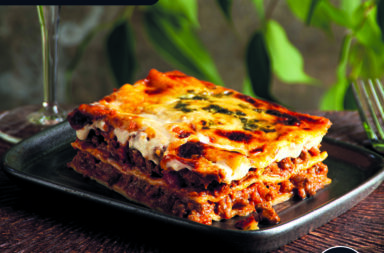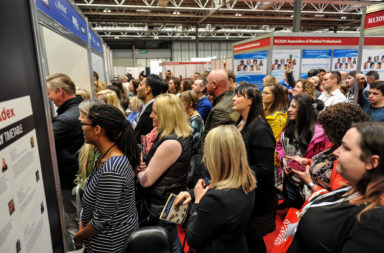Laureus Sport for Good has helped to improve the lives of millions of young people in over 35 countries. IMAGE (Indian Mixed Ability Group Events) is one of their projects. Starting five years ago it was set up to use sport in India to support the inclusion of disabled youngsters in everyday life. Project Leader, Sneh Gupta, relates how one simple cricket match brought two very different communities together.
Some players were masters in the art of no-legged bowling while others were skilled batsmen and fielders. The mixed-ability IMAGE India team comprised of passionate and determined youngsters, who wanted to use sport to make a point and prove their worth.
IMAGE India team took on a group of confident, skilled bus conductors from Rajasthan. In the days leading up to the fixture, bus conductors regularly ignored the disabled youngsters waiting to board their vehicles but what happened on the field at Barkatullah Khan Stadium in Jodhpur changed everything.
“From that day on, they’ve stopped and helped the youngsters on board,” says Sneh, “and it’s all down to the sport of cricket.”
Positivity
Sneh visited the SKSN boarding school back in 1996 whilst working on a documentary on life in India. She admits she was “blown away” by what she saw, the hope which was being instilled in the youngsters and the positivity in what they were doing. Led by Dr. Narayan Singh Manaklao, the school was embarking on a special journey for youngsters with disabilities.
“The thing that was quite amazing about this little organisation was that apart from providing an education, this incredible man had also been using sport as a replacement for physiotherapy since 1991 when SKSN was first founded, because he didn’t have money to employ physiotherapists” says Sneh.
The activities they were partaking in varied from ‘Malkhamb’, a sport that requires incredible strength and agility to scale a pole and perform yoga asanas on the tip of the pole through to throwing a cricket ball, or a 100m-handstand race. Most youngsters involved were affected by polio, some single, some double amputees. After what she saw, Sneh decided to stay, to volunteer her time.
“There was this one kid who was a doubleamputee, just below his bottom,” Sneh recalls. “He was flying through the air, just moving on his bottom using his hands. They were so happy.” The youngsters had little other reason for happiness. Traditionally in India, children with disabilities are not included in education, health services, transportation, economically, or even employed. Indeed, when term time came to an end, many youngsters were left behind and forgotten about. Parents refused to collect them to take them home for the summer.
Inclusion
Sneh’s involvement and the creation of IMAGE, in partnership with Laureus, brought about further integration and education around disability. Able-bodied youngsters would visit the disabled youngsters at the school and play sports with them. Cricket, table tennis, volleyball, basketball; any opportunity the disabled kids had to get involved in sport, they took. Sport was the activity which kept the kids going forward. Cricket, being India’s national sport, was number one.
Sneh recalls that, the nondisabled kids, “began to notice the abilities of the disabled. They began to see that just because somebody’s leg might not be working, somebody’s hand might not be working, arm might not be working; you can’t just write them off or say that they have any lesser ability than people who have got all four limbs working perfectly well.”
The fixture, between a mixed-ability team from IMAGE and bus conductors from Jodhpur, took place in the city’s biggest cricket stadium, Barkatullah Khan Stadium. The biggest names in Indian cricket have batted and bowled there but that day it played host to something special.
Playing to win
The children who played in the game took up positions that most suited their disability and the match looked to be a close affair until the end of IMAGE’s 15 overs. At this point, the conductors looked in control and in order for IMAGE to win, five runs off two balls were needed, which seemed almost impossible considering the circumstances. But it was IMAGE Youth Mentor, Mahendra Singh, an amputee, who brilliantly dealt with the penultimate ball, firing off the only six of the match, to the delight of the hundreds of spectators of the IMAGE community and from neighbouring villages.
Shyam Lal, 19, who played for the IMAGE team that day, has vivid memories.
“I still find it unbelievable that we won the match. It was an immensely proud moment for my team and me. This is the same place where the Indian national team once played matches.
Even during the match, the bus conductors were asking us to go easy on them. Losing the match at the hands of a team, which included cricketers with disabilities, devastated them. The message that my team and I were able to send the bus conductors off with was that nobody should be judged at face value regardless of who or what they see in front of them.”
Displaying ability
The match served as a platform for the disabled youngsters to display their ability, to show the wider public that they should never be discounted or judged. The young people who were frowned upon became role models overnight, the real heroes showing the real power sport has for social change.
Laureus Academy Member, Tanni Grey-Thompson spent time visiting Sneh and the youngsters at the IMAGE programme in Jhodpur, saying: “I was truly inspired by the spirit and determination of the young children on the IMAGE project who refuse to let adversity or ignorance hinder them as they seek to build positive lives for themselves,” she reflected.
“Laureus is passionate about helping young people and to see in such stark detail the challenging situations these children have to face is heartbreaking and underlines why Laureus Sport for Good must continue its dream of changing the world through sport.”
The players along with an army of young leaders, with and without disabilities from the IMAGE programme, continue to shift perceptions on disability. They are reaching out to the local communities, delivering valuable knowledge in health, education, gender, and disability, through sport and play, proving their abilities, and gaining the respect of the wider community.
These youngsters have gone from being called derogatory names to being addressed with respect, and are now known as the ‘bhaiyas’ and ‘diddis’ (‘brothers’ and ‘sisters’) of IMAGE.
Pictures courtesy of Laureus-Getty Images.



